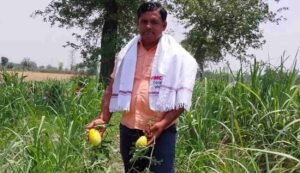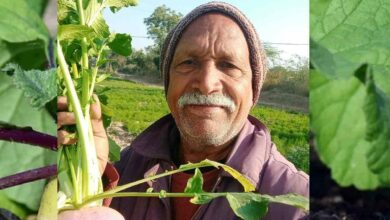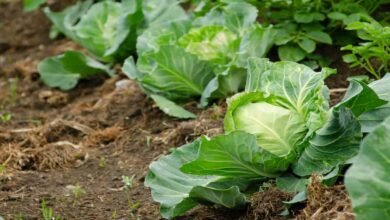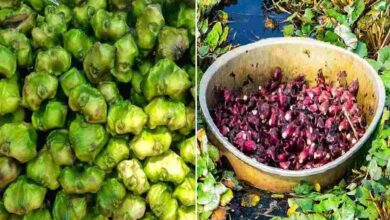This farmer of Uttar Pradesh is earning lakhs of rupees by farming modern sugarcane
Sugarcane Cultivation: A forward-thinking and accomplished farmer from Bulandshahr, Uttar Pradesh, Rakesh Sirohi has made a name for himself in the sugarcane industry. Because of his love for farming and dedication to using contemporary agricultural methods, Sirohi has revolutionized his cultivation methods, greatly boosting his yields and profitability. In addition to being a prosperous farmer, his inventive techniques and unwavering commitment to hard work have made him an inspiration to many people in the farming industry.

Millions of sugarcane farmers nationwide are still motivated by his narrative to adopt new technology, enhance their methods, and succeed more in their own agricultural endeavors.
Appreciation and Modification of the Contemporary Method
He has worked in the agricultural industry for the last 17 years, and by using the newest and most sophisticated farming practices, he has significantly raised his produce and profitability. He has been primarily focused on sugarcane farming for the last 13 years, and as a result, he has accomplished several significant accomplishments in the field.
His property, which spans around 11 hectares, sets an example for other farmers by producing 2000 quintals of sugarcane per hectare. It is noteworthy that in the State Sugarcane Competition Scheme’s 2020–21 productivity award, Rakesh Sirohi placed second in the state. Rakesh now serves on the sugarcane department’s rate determination committee and sugarcane production competition committee.
Techniques for Growing Sugarcane
In particular, Rakesh Sirohi grows fall sugarcane (Sugarcane Farming), which is best sown between mid-September and mid-October. He has raised the bar for sugarcane farming’s success by using novel cultivars and methods.
They grow novel types of sugarcane, including 13235, 18231, 16202, 17018, and 15023 (excellent for producing jaggery). These new types have the major benefit of being disease and pest-free, which boosts output.
In order to ensure stability in the quality of the yield, Rakesh thinks that a sugarcane variety should only be planted for five to seven years before being replaced by other types.
Quality of Soil and Management of Manure
Rakesh advises plow the soil well at least thrice before planting sugarcane. The crop benefits from increased air and sunshine movement and the breaking of the hard layer under the soil. In addition to using chemical fertilizers on his fields, Rakesh adds Trichoderma to the soil by mixing it with cow dung manure. This keeps the soil fertile and gives the plants the nutrients they need.
Utilizing Natural and Organic Techniques
Rakesh Sirohi employs chemical ways to grow 8 hectares of his land, while he uses natural methods to cultivate 3 hectares. In order to preserve water and protect the crop from too much moisture, he only waters the sugarcane crop after the soil has become white.
Sugarcane Cultivation Using the Trench Method
Rakesh farms sugarcane using the trench technique. This process yields 35–40% more sugarcane than the standard method. When sugarcane is seeded using the trench technique, 80–90% of the crop germinates, compared to 40–45% when using the regular method.
The trench approach has many benefits, including a reduction in termite and subsurface insect infestation, water conservation, and fertilizer waste elimination. The trench technique requires just 12–14 quintals of seeds per acre, whereas the usual approach requires 28–30 quintals.
Rakesh Sirohi uses the drip irrigation technique, which reduces water waste while providing the sugarcane crop with the necessary quantity of water.
Innovative Techniques, Seed Production, and Mixed Cropping
Rakesh also cultivates minor crops like mustard, cauliflower, brinjal, marigold, cabbage, and bitter gourd in addition to sugarcane. This is known as mixed cropping. In addition, he is a manufacturer of sugarcane seeds, which he makes by introducing new government-approved sugarcane types.
They really produce and sell new types to other farmers at a price marginally higher than the government’s pricing after ordering them from the government research facilities in Shahjahanpur and Lucknow. This increases their revenue.
Farmer Rakesh Sirohi earns between 30 and 35 lakh rupees a year from sugarcane cultivation thanks to his diligence and productivity. He sells 60% of his sugarcane to other farmers as seed, with 40% going to the sugar factory. He has become a forward-thinking farmer in Bulandshahr thanks to his contemporary tactics, trench system, and good sugarcane crop output.





